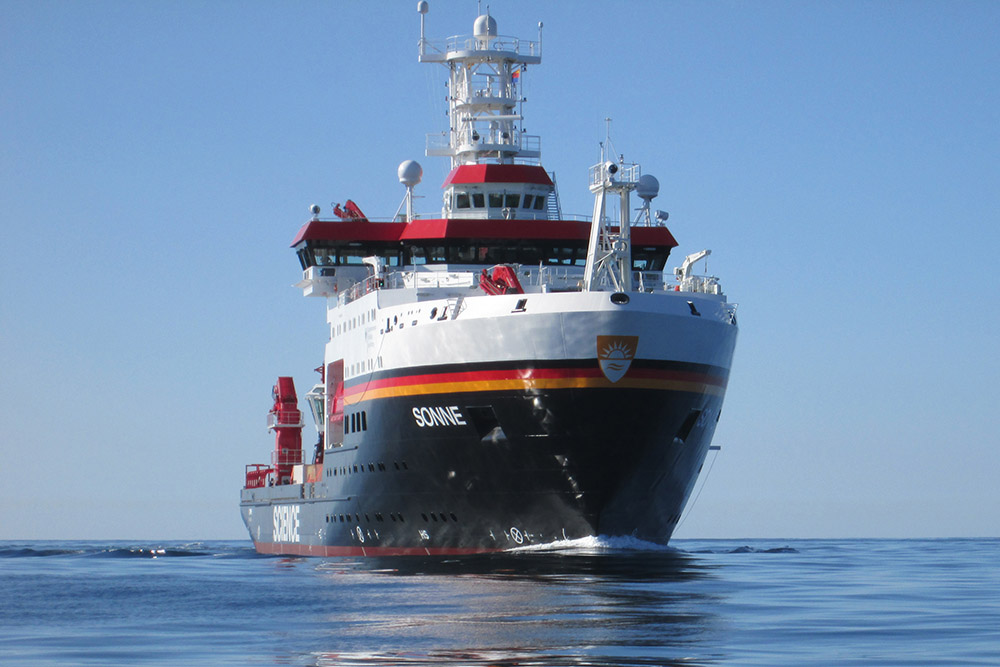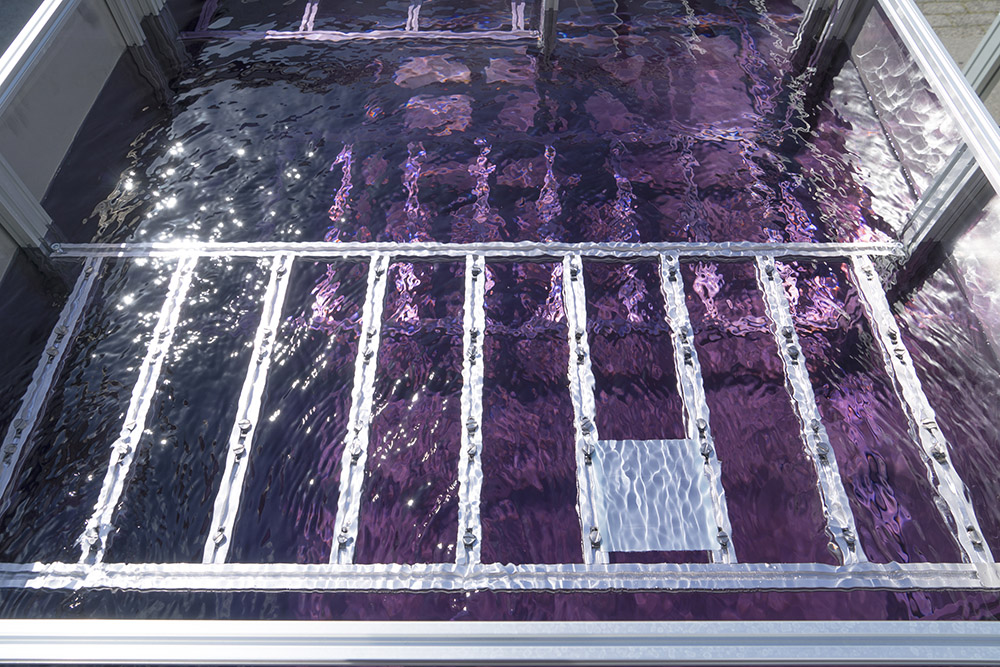Occurrence and fate of microplastic in the marine environment MICRO-FATE starts with Pacific Ocean expedition
To date, little is known about what happens to microplastic in the sea. The MICRO-FATE project is expected to bring about a change to this situation. The international team of researchers intends to find out where microplastic accumulate in the ocean, how it is degraded and the effects it has on the environment. A five-week expedition on the research vessel SONNE across the Pacific Ocean from Vancouver to Singapore marks the start of the project. Their most important objective is to take and conserve samples for upcoming laboratory analysis in addition to performing initial experiments. Fraunhofer IKTS investigates on bord the changing properties of plastic particles due to weathering and fragmentation.


Millions of tons of plastic waste are transported by rivers, by wind and in waste water into the sea, where the plastic remains. To date, there are no detailed data on where plastic accumulates and how much. Previous estimates rely on computer modelling, individual data and observations from the air. “We want to provide substantiation for these estimates and to find out what happens to the plastic in the ocean and which effects microplastic has on the environment,” explains project manager Dr. Annika Jahnke from the Helmholtz Centre for Environmental Research (UFZ). At UFZ, the environmental chemist heads the “MICRO-FATE” project funded by the Federal Ministry of Education and Research (BMBF), which will run until 2021.
On May 30, a team comprising 19 MICRO-FATE researchers are setting off from Vancouver (Canada) on an expedition across the Pacific Ocean. The team on board the research vessel SONNE, scheduled to arrive in Singapore on July 5, will consist mainly of biologists, ecotoxicologists and chemists. They will take samples at several stations along the passage not only in the North Pacific Garbage Patch, one of the largest accumulation areas of floating waste in the Pacific Ocean, but also at less polluted locations.
Subjects
One of the researchers’ primary objectives is to collect samples from the surface water, the water column and from the seabed, and to find out more about the vertical distribution of the plastic particles and to identify potential gradients with regard to concentration, composition, age and coverage with biofilms.
The analysis of the samples from the seabed is also expected to provide information on plastic material in the sediments and on where microplastic end up in the sea. There are researchers who speculate that most of the material is deposited on the seabed. The sediment samples and the water will also be examined for organic pollutants to find out if plastic is a source or sink of pollutants into the marine environment.
Another focus is to examine how the polymer structure of the plastic particles changes as a consequence of weathering. To date, weathering has been mostly simulated in the laboratory at IKTS. For this reason, there are steel tanks filled with seawater on board the research vessel to expose plastic material. “We want to use these to examine the influence of solar radiation, the salt content and the temperature on the plastic weathering process. The idea is to validate the results of our previous laboratory experiments with these field experiments,” says Dr. Annegret Potthoff, group manager Powder and Suspension Characterization at IKTS.
The consequence of weathering is that plastic items gradually decay and ultimately fine polymer particles are formed. These tend to be covered with biofilms and to form heteroaggregates. The researchers hypothesise that these biofilms play a decisive role for the fate, transport and weathering of marine plastic. For this reason, they will analyse the biofilms and examine their function and the role they play in biogeochemical cycles in the marine environment. Studies suggest that biofilms growing on plastic differ from other marine microbiological communities and that plastic is consequently a new habitat for microbes in marine systems – with implications as yet unknown.
MICRO-FATE
The MICRO-FATE project “Characterizing the Fate and Effects of Microplastic Particles between Hotspots and Remote Regions in the Pacific Ocean” brings together UFZ researchers with colleagues from the Fraunhofer Institute for Ceramic Technologies and Systems IKTS, the Leibniz Institute for Baltic Sea Research, Warnemünde IOW and Stockholm University SU in Sweden. The Alfred Wegener Institute Helmholtz Centre for Polar and Marine Research AWI and the Senckenberg Research Institute will also be involved. The Federal Ministry of Education and Research (BMBF) funds the project with some € 820 000 until 2021.
Current information from the trip on the expedition blog: https://blogs.helmholtz.de/on-tour/en/